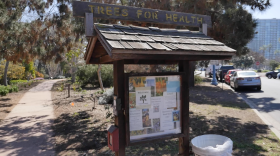Firefighters throughout California are getting real-time information about the Los Angeles wildfires from a communications system developed by UC San Diego 25 years ago.
Why it matters
Real-time information can help emergency managers decide how to respond to fires: to confirm and monitor them, deploy resources and support evacuations. First responders around the state are getting that information through Alert California, a network that began as a UCSD wireless communications project called HPWREN (High Performance Wireless Research and Education Network).
"We deployed these cameras initially just to look at weather conditions, things like that and now that is the dominant use of the network is the wildfire stuff," said Frank Vernon, a UCSD research scientist and an investigator for both the HPWREN and AlertCalifornia Projects.
"Someone calls in a 911 thing, the fire agencies can look right away and say, ‘Okay, this is something that's significant or not.’ They can incorporate that in all their decision making processes," Vernon said.
By the numbers
HPWREN has 148 fixed cameras at 34 individual sites in San Diego County. It’s included in AlertCalifornia’s network of more than 1,100 pan-tilt-zoom cameras.
Initial funding came from the National Science Foundation, but they now receive major funding and support from other organizations including SDG&E and San Diego County Fire.
Closer look
The images are all available to the public on the AlertCalifornia website.
“So each individual can get on the internet wherever they are, cell phone at home and look and see, pick up the cameras in their area and go see what's important to them,” Vernon said.






